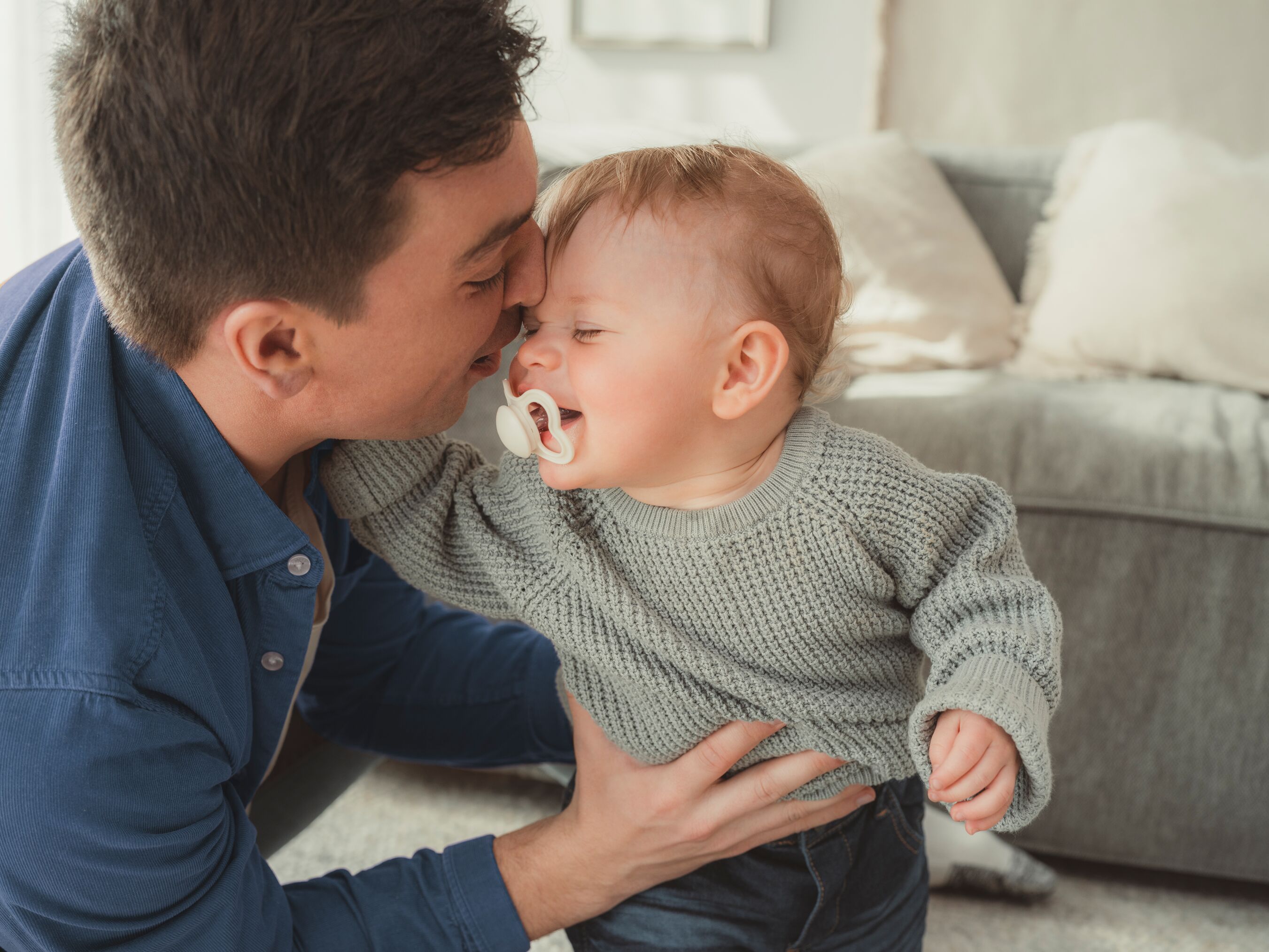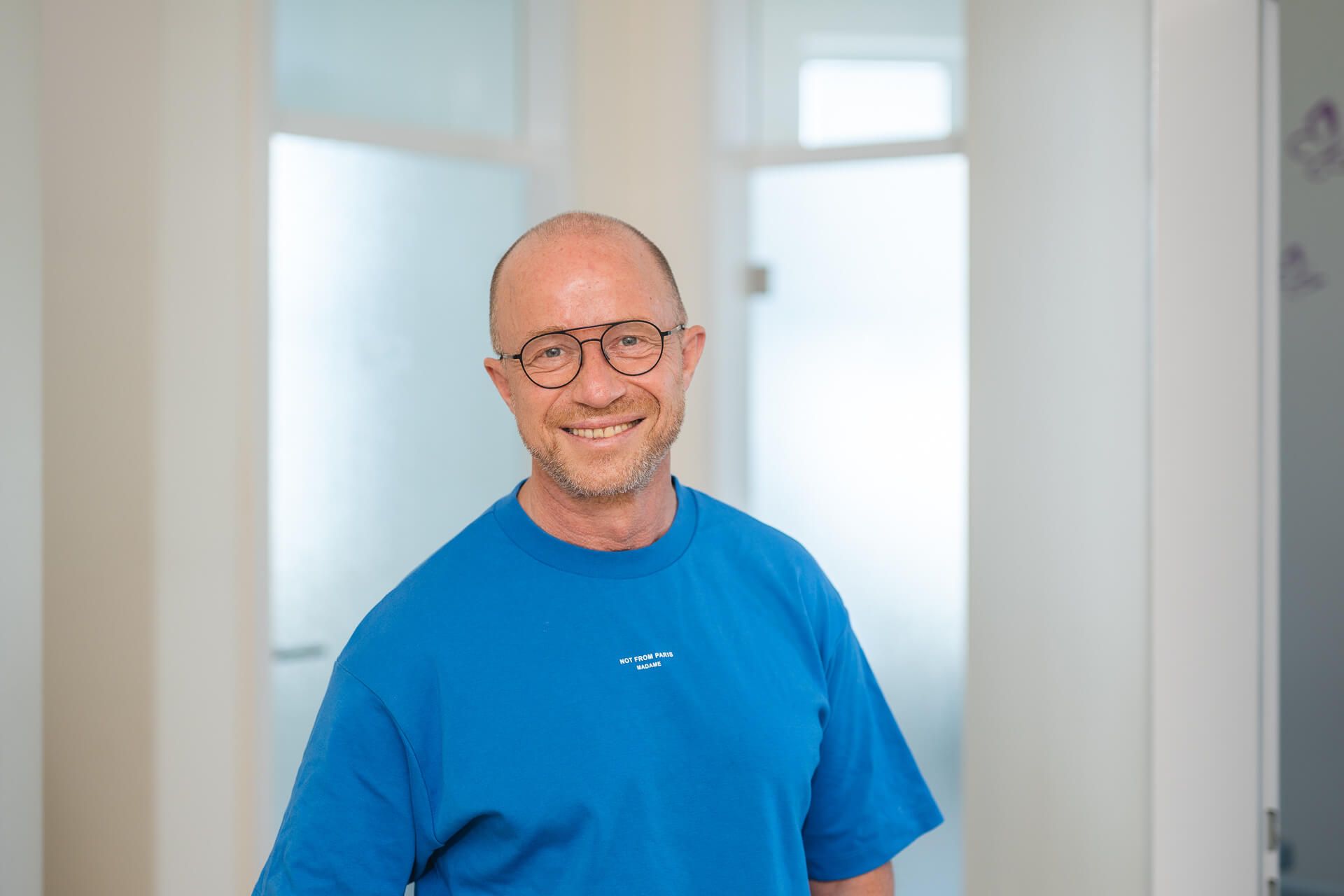A brief moment of not paying attention and it can happen: the child has scalded themselves with hot water, eaten a poisonous berry or is in danger of choking on a small toy. Dr Michael Dördelmann, Chief Physician at the DIAKO Clinic for Pediatrics and Adolescent Medicine in Flensburg and operator of Pädicus, an advice portal for preventive healthcare in childhood, knows how parents should react in such situations. In an interview with MAM, he explains how dangerous situations can be avoided and what measures parents should be aware of if something does happen. He also dispels some myths circulating about first aid for children.
Disclaimer: This interview refers to German first aid recommendations, which may differ from local variations.
MAM: Dr Dördelmann, you offer first aid courses for children. Why is this topic important to you?
Michael Dördelmann: Many parents are unsure how to react if their child gets into an accident or sustains an injury. I want to show moms and dads how they can react calmly and without fear. In an emergency, it is important to remain calm. Fear is also transferred to the child. If parents know what to do, they won't panic so quickly. However, there are some myths surrounding first aid for children. I would like to help clear this up.
What are these first aid myths?
In almost every hazardous situation, there is also misinformation about what to do. Let's start, for example, with the behavior for pseudocroup. These are virus-induced coughing fits with shortness of breath that occur mainly at night. The affected children seem to struggle to breathe, which can naturally cause great anxiety. It is often said that the child needs cold, moist air in this situation. However, this has proven to be ineffective, at least for moist air or water vapor. And even for cold air, there is only a little data from a completely new study.1
According to this, cold air like standing by an open refrigerator door (3) can at least bring some improvement for lightweight to moderate coughing fits.
When we adults burn or scald ourselves, we run to the tap to cool the affected area of skin. Is this also the right thing to do for children?
Yes, but not without exception. In the event of scalds or burns, parents need to react very quickly and start cooling immediately under running, albeit lukewarm, water. The positive effect of protecting the body tissue from heat damage is only felt in the first few seconds. After that, the water mainly relieves the pain. However, babies and small children in particular can quickly become hypothermic. Children under the age of one should therefore not be cooled at all. The same applies to larger burns that cover more than two per cent of the body surface.
But how can parents estimate how much of the skin is affected?
There is a rule of thumb for this: One per cent of a child's body surface is roughly equivalent to the area of the inside of their hand and fingers. If the burn is significantly larger, it is better not to cool it.
Ideally, emergencies should not occur in the first place. What tips do you have for preventing dangerous situations?
One major danger, for example, is drowning. Many people don't realize this: Children can drown in water as little as 10 to 20 centimeters (4-8 inches) deep or even in puddles. The fatal thing is that this generally happens very quietly. When immersed in water, children can suffer a glottal spasm, which makes crying and breathing impossible. In deep water, children simply sink like a stone. Parents should therefore never leave their child unattended near pools, garden ponds, rain barrels or bodies of water. It is also a misconception that children are safe if they wear swimming aids when splashing around, as these can come loose or even fail.
There have been reports of children dying hours or days after being rescued from drowning. This has worried many parents. Can there be consequences later on if a child swallows water while bathing?
There is a big difference between a child choking while splashing around and almost drowning. In the latter case, inhaling a large amount of water, for example with other foreign substances, can lead to lung dysfunction. However, these do not remain asymptomatic. In the cases described, the causes of death were not related to the near-drowning. I can reassure parents here: If a child swallows a small amount of water while bathing, this usually poses no danger. The coughing stimulus protects the lungs.
Sudden infant death syndrome is a particularly threatening scenario: when an infant dies unexpectedly and without recognizable cause in its sleep. What can parents do to reduce this risk?
A safe sleeping environment is crucial here. Anything that could cause the baby to overheat or hinder their breathing should be avoided. If possible, the baby should sleep in their own bed in the parents' bedroom, on a firm mattress, without pillows, blankets, or cuddly toys. Up to the age of one year, it is recommended that children sleep on their backs. However, some babies manage to turn from their back to their tummy even before this - from around the fifth to seventh month. Many parents are then unsettled. However, if the child can turn onto its stomach independently, they can stay in this sleeping position. Even if the child is not yet able to do this, it is still possible for them to lie on their stomach or side - but always on the condition that the parents keep an eye on their child while they sleep.
What is recommended regarding breastfeeding and sudden infant death syndrome?
Infants should be breastfed for a year or longer, but at least for the first four to six months. This has proven to be protective. Once breastfeeding has become established, parents can offer their child a pacifier to sleep with. Studies have shown that soother use is associated with a lower risk of sudden infant death syndrome. 2,3 Interestingly, the protective effect remains even if the baby loses the pacifier while sleeping. It is therefore not necessary to keep putting it in the mouth at night.
Many parents want the greatest possible safety. Are home monitors useful for monitoring vital functions?
The use of home monitors or mats that monitor the baby's breathing movements or pulse is not recommended. Neither pauses in breathing nor a low pulse rate can reliably predict the risk of sudden infant death syndrome. Instead, the oxygen saturation in the blood should be measured. However, this requires a medical monitor. If there is a particularly high risk, parents can use such a device at home. However, the additional safety also comes with disadvantages: false alarms disturb sleep and anxiety can put a strain on the parent-child relationship. It is therefore important to weigh things up carefully and keep the monitoring phase as short as possible.
What general advice can you give to worried parents?
There can never be absolute safety with children. This makes it all the more important that parents recognize potential dangers in their children's lives and know how to react correctly in an emergency. The best way to acquire this knowledge is to attend a practical first aid course. Most parents will then realize that first aid for children is usually not as complicated as they think.
How to act in pediatric emergencies
First aid for scalds and burns:
- Remove clothing
- Cool immediately under running water (only for minor burns, not for children under 1 year old)
- 5 to 10 minutes with lukewarm water (15 to 20 degrees Celsius)(59-68 degrees Fahrenheit)
- Keep the child warm
- In the event of scalding and burns > 2% body surface area (burns > 2 x the child's hand/finger area) or injuries to the face, bends, trunk/genital area, or if the burn/scald is circumferential (goes all the way around the extremity): call emergency services
Reduce hazardous situations
Drowning:
- Teach the child to swim as early as possible
- Never leave children who cannot swim unsupervised in the water
- Puddles and shallow water are also a danger for small children
- Do not rely on swimming aids
Sudden infant death syndrome:
- Put baby to sleep on their back
- Let the baby sleep in their own bed in the parents' bedroom
- Offer a pacifier to fall asleep with when the baby is already used to the pacifier
- Avoid overheating (cool room, do not dress too warmly)
- Ensure hazard-free environment (no pillows, blankets or cuddly toys)
- Ensure a smoke-free environment
- If possible, breastfeed or give breastmilk for 1 year or longer (at least 4 to 6 months)
__________________________________________________________________________________
Table 1: Important first aid measures for children and tips for minimizing dangerous situations (selection)
Courses and reading tips on first aid for children
- Online courses, for example at erstehilfekind.de or paedicus.de
- Meier, L. (2023). First aid for your child. Weinheim: Beltz
- Keggenhoff, F. (2021). First aid - The official handbook. Munich: Südwest-Verlag
- Malteser (2019). First aid for babies and children. Munich: Dorling Kindersley Publishers
- American Academy of Pediatrics. Home | AAP
- American Red Cross.Red Cross Training | Take a Class | Red Cross
- American Heart Association | To be a relentless force for a world of longer, healthier lives
- Centers for Disease Control and Prevention | CDC
- HealthyChildren.org - From the American Academy of Pediatrics
- Poison Control
- Homepage | Safe to Sleep (nih.gov)
1 Siebert, J. N., Salomon, C., Taddeo, I., Gervaix, A., Combescure, C., Lacroix, L. (2023). Outdoor cold air versus room temperature exposure for croup symptoms: a randomised controlled trial. Pediatrics, 152(3), e2023061365.
2 Hauck, F. R., Omojokun, O. O., & Siadaty, M. S. (2005). Do pacifiers reduce the risk of sudden infant death syndrome? A meta-analysis. Pediatrics, 116(5), e716-e723.
3 Vennemann, M.M.T., Findeisen, M., Butterfaß-Bahloul, T., Jorch, G., Brinkmann, B., Köpcke, W., Bajanowski, T. and Mitchell, E.A. (2005). Modifiable risk factors for SIDS in Germany: Results of GeSID. Acta Pædiatrica, 94: 655-660.


